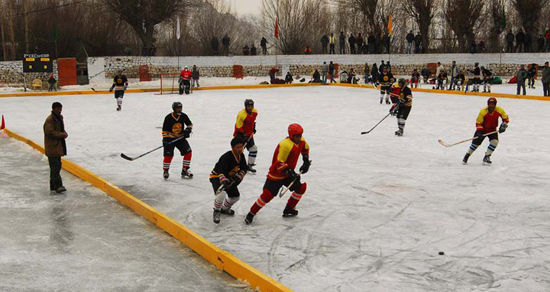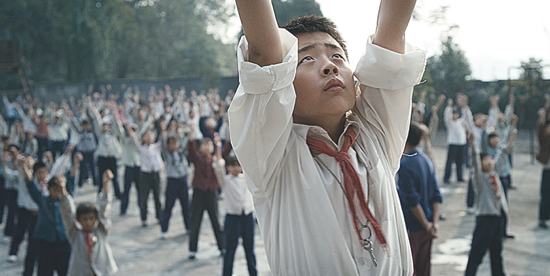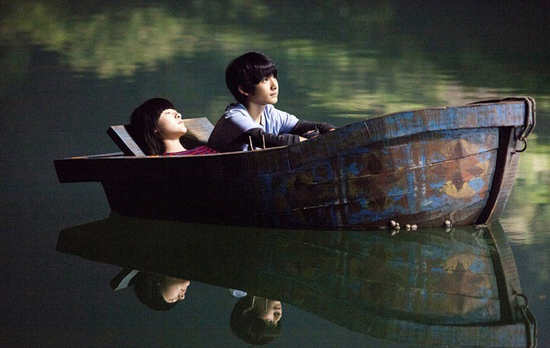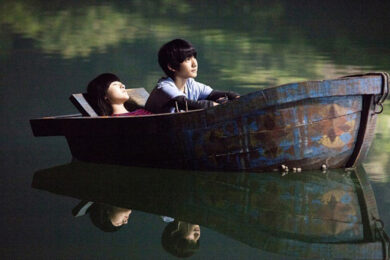This year’s Pan-Asia Film Festival was the biggest and most ambitious to date. The festival is run by the relatively young non-profit organisation Asia House, which aims to build and develop cultural and business links between Britain and Asia; the event is clearly a key part of their cultural strategy, along with a literature festival in May. Asia House represents a huge area: 40 countries, stretching from Lebanon to Japan, Mongolia to Indonesia. For this year’s instalment, artistic director Sonali Joshi put together a programme of just eight films, selected from all across the region. In previous editions, the festival has showcased popular and acclaimed work such as Tran Anh Hung’s gorgeous Norwegian Wood (Japan, 2010) and Aktan Arym Kubat’s The Light Thief (Kyrgyzstan, 2010). Hopefully, at least some of 2012’s choices will enjoy similar success.
But representing 40 countries and cultures from the Middle East to the Pacific in the space of ten days is a tall order. The name itself, ‘Pan-Asia’, sounds hubristically over-ambitious. Kinoteka, the Polish film festival currently in its tenth year and running concurrently with the Pan-Asia festival, presented a greater number of films from Poland alone. London also has plenty to offer in terms of Asian cinema: the upcoming Terracotta festival (April 12-15) covers the Far East; there’s Taiwan Cinefest (May 23-26) and the third Indian Film Festival (June 14-26); last year saw the third China Image Film Festival in September; Zipangu Fest featured a strand of Japanese films in November, a month which also saw Korean and Iranian film festivals. The first MENA (Middle East and North Africa) festival is planned for later this year and, of course, the BFI’s London Film Festival has a comprehensive World Cinema strand.
It’s not that there’s too many festivals: given the right artistic direction, London can surely support this many. The question is more whether there’s a need for one that is so obviously about breadth over depth. Can it do anything that these more specific events can’t?
Actually, the festival’s rationale is cogent and persuasive. Its stated intention is ‘to showcase new cinema, to reflect the vibrancy and energy in Asian filmmaking today.’ Furthermore, curator Sumi Ghose’s introductions explained that the aim of the selection was to provide views into the ordinary lives of people from across the region. It makes a virtue of its enormous scope: it doesn’t even try to represent the diversity that exists in any kind of comprehensive way, instead offering us tiny oblique glimpses of places and people, like brightly lit windows seen from a moving train. There’s everything from a young man’s journey on foot across a remote plateau in Tibet to a portrait of women’s lives in contemporary Iran, from the struggles of the Indian ice hockey team to those of youths growing up in rural China during the Cultural Revolution.
But across this wide selection, there’s also a fascinating network of thematic connections. These films are about home and family, and they’re about boundaries, transitions and transgression, both physical and emotional. They don’t just show us the familiar images of their home countries, they show us the places where languages and cultures intersect.
The programme opened with the world premiere of One More (India, 2012). Ladakh in the far north-east, is the only place in the country where they play ice hockey, on the frozen ponds in the mountains, 5000 metres above sea level. This is the edge of India: a remote and beautiful plateau of mountain passes between the Himalayan and the Karakoram ranges, a place that’s more Tibetan than it is Indian, that’s seen more than its fair share of conflict. Shivajee Chandrabhushan’s film, the second he’s made here, is ostensibly a lighthearted sports comedy – as the only ice hockey team in India, the locals become the de facto national team, and end up facing Canada in an international tournament. It’s not the best made movie. The local actors, while game, are often uncomfortable on screen, and the pacing and editing leave a lot to be desired. But it’s still a fascinating glimpse into the real lives of people in this part of the world. It’s about how Ladakh functions as a cultural crossroads where people communicate in English and welcome wanderers from Russia. It immediately set the tone for a festival that was about finding stories from places we don’t hear about, and showing what we all have in common despite the distances between us.

From the other side of the Tibetan plateau came The Sun-Beaten Path (2011), a remarkably accomplished debut feature from Sonthar Gyal. A young man, Nyma, clearly troubled, trudges along a lonely tarmac road through a desolate landscape, burnt by a harsh sun in the day and frozen at night. The road is the only sign humans have ever been across this seemingly neverending, barren plateau. He’s on his way back from a pilgrimage to Lhasa, a journey people in mourning make by prostrating themselves all the way. But the pilgrimage hasn’t healed Nyma like it’s supposed to and an old man takes him under his wing – despite the vast, wild emptiness of the plateau, everybody who drives across it is a regular and knows everyone else. It’s an assured piece of storytelling with the confidence to let just the sound of the wind and the occasional reminiscences of the old man serve as soundtrack. But amid all the melancholy, warm notes of humour shine out – in places, this feels almost like a Tibetan Straight Story.
The journey narrative offers many complex themes: the longing to go home and the fear that you never can; travelling away from something, as well as towards something. Inevitably, they’re also caught at a cultural crossroads. An old man makes a fire from collected dung, then answers a mobile phone with flashing lights and a jolly ringtone in the middle of a desert. In The Sun-Beaten Path, home and family are present in their absence, lingering over Nyma’s self-imposed exile. In some ways it recalls Khyentse Norbu’s Travellers And Magicians (Bhutan, 2003): another tale of disparate travellers meeting on the road, revealing stories as they go, told from a Himalayan Buddhist perspective in a period of cultural transition. It’s good to see narratives like this continuing to emerge from the mountains.
Tom Lin’s Starry Starry Night (Hong Kong, 2011) shows another coming-of-age marked by a journey, this time into the Taiwanese mountains. 12-year-old Mei has moved to the city with her unhappy, quarreling parents, but longs for the peaceful night skies of the mountains where she lived with her grandfather. In contrast to the homely wooden animals her grandfather carves in his workshop, Mei’s mother is obsessed with European art, and with France in particular. Their walls are covered in reproductions of impressionist masterpieces, with the odd symbolic piece of surrealism thrown in (as her parents scream at each other, Magritte’s The Lovers swims into view). As the camera gets closer, it’s revealed that these are completed jigsaw puzzles, each one a memory of a period of Mei’s childhood. A series of crises send her and best friend Jay travelling.
The most whimsical film of the festival, Starry Starry Night makes great use of animation to illuminate Mei’s hopes and dreams, culminating in a wonderful sequence in which she and Jay fly through Van Gogh’s famous starry sky. This is another meandering journey, with plenty of diversions on the path to understanding and finding a way back to home and family. Again, the meeting of cultures is a key theme. Here there is more harmony, a sense that all art can be held in common, rather than of the encroachment of Western aesthetics upon the traditions of a place to which they seem alien.

Mei and her mother’s passion for Western art is shared by the father figure in Wang Xiaoshuai’s 11 Flowers (China, 2011), who encourages his son to paint still lifes because, he says, becoming an artist means a life of freedom. Set during the last days of the Cultural Revolution in rural Guizhou province, 11 Flowers tells the story of a group of young boys growing up against a tense, dangerous backdrop of politics and ideals. As with Starry Starry Night, adult problems and complications go largely above the heads of the children, while their own personal interactions and passions shed indirect light on these wider concerns.
11 Flowers is very reminiscent of Dai Sijie’s Balzac And The Little Chinese Seamstress (China, 2002) which is set in the neighbouring Sichuan province. They’re both charming, atmospheric, autobiographical pictures, dealing with the impact of the Cultural Revolution on rural communities and city intellectuals forced to move to the country for ‘re-education’. And both are concerned with the influence of Western culture in an environment where any artistic endeavour that doesn’t praise Mao is considered a dangerous thoughtcrime. The interesting contrast, though, is that fact that Dai wrote the novel on which he based his film in French, while living in Paris. He’s been suspected of a kind of cultural imperialism, privileging reverence for Mozart and Balzac over a voyeuristically observed Chinese culture (represented by the illiterate seamstress who must either be seduced by Western materialism or crushed by Maoist totalitarianism.)
Whether or not arguments like these hold water, 11 Flowers, although more authentically ‘Chinese’, raises similar questions about what a work like this does for perceptions of China and her history. Furthermore, should we expect it to do anything at all, any more so than a Hollywood production set during World War II? And this, above all, reflects the main concern for the Pan-Asia Film Festival. In showing us an eclectic collection of films linked by a web of thematic connections, and in aiming to provide glimpses into the ordinary lives of people across Asia, it invites us to learn something, but also to spectate. Whether the emphasis on the country of origin alters the reception of narratives with such universal themes as home, family and borders is ultimately up to the individual viewer. Whatever you think of the scope, it would be difficult to argue that the festival does not achieve its aim to showcase some of the best new Asian cinema, or that filmmaking from the continent does not need the support of such a carefully curated event.



